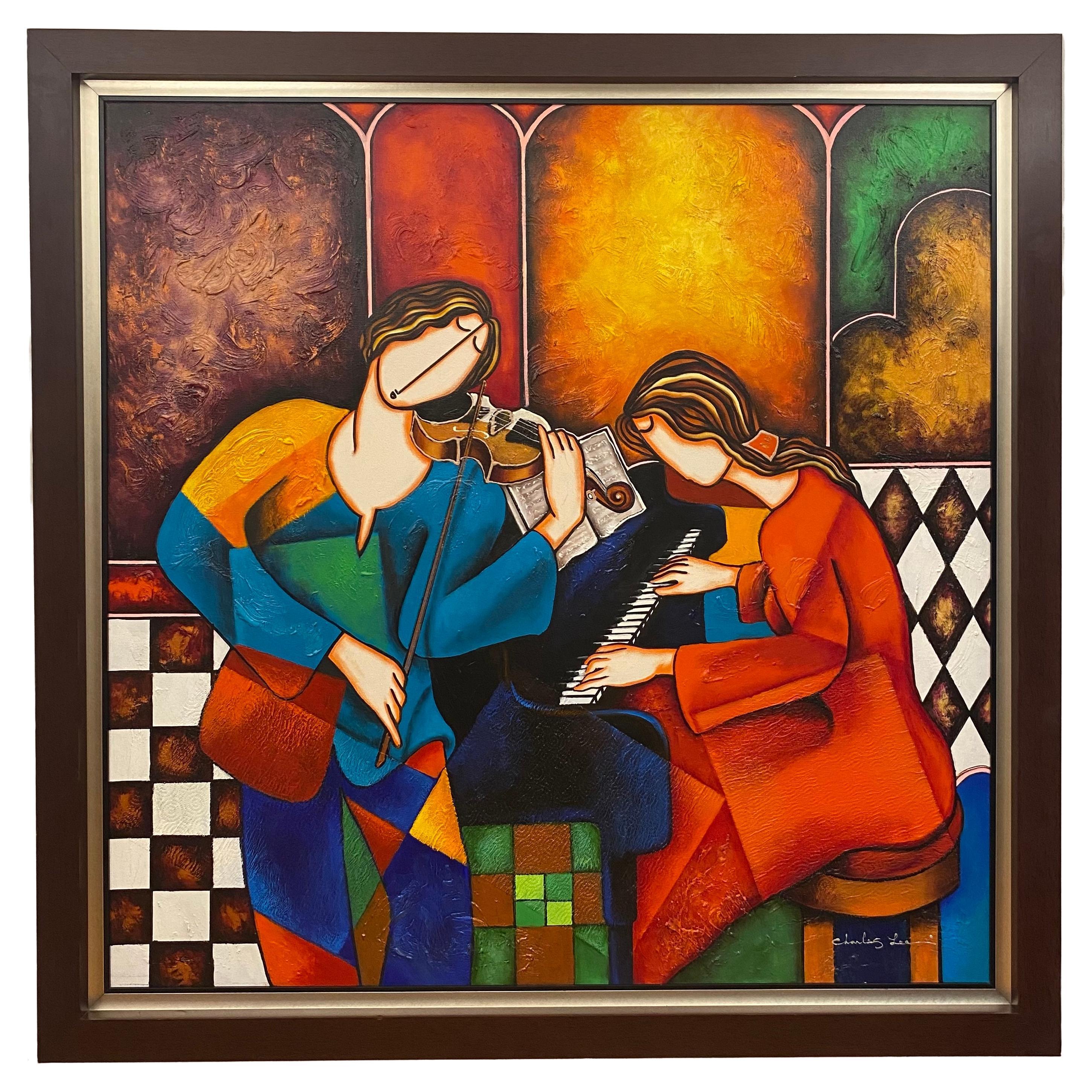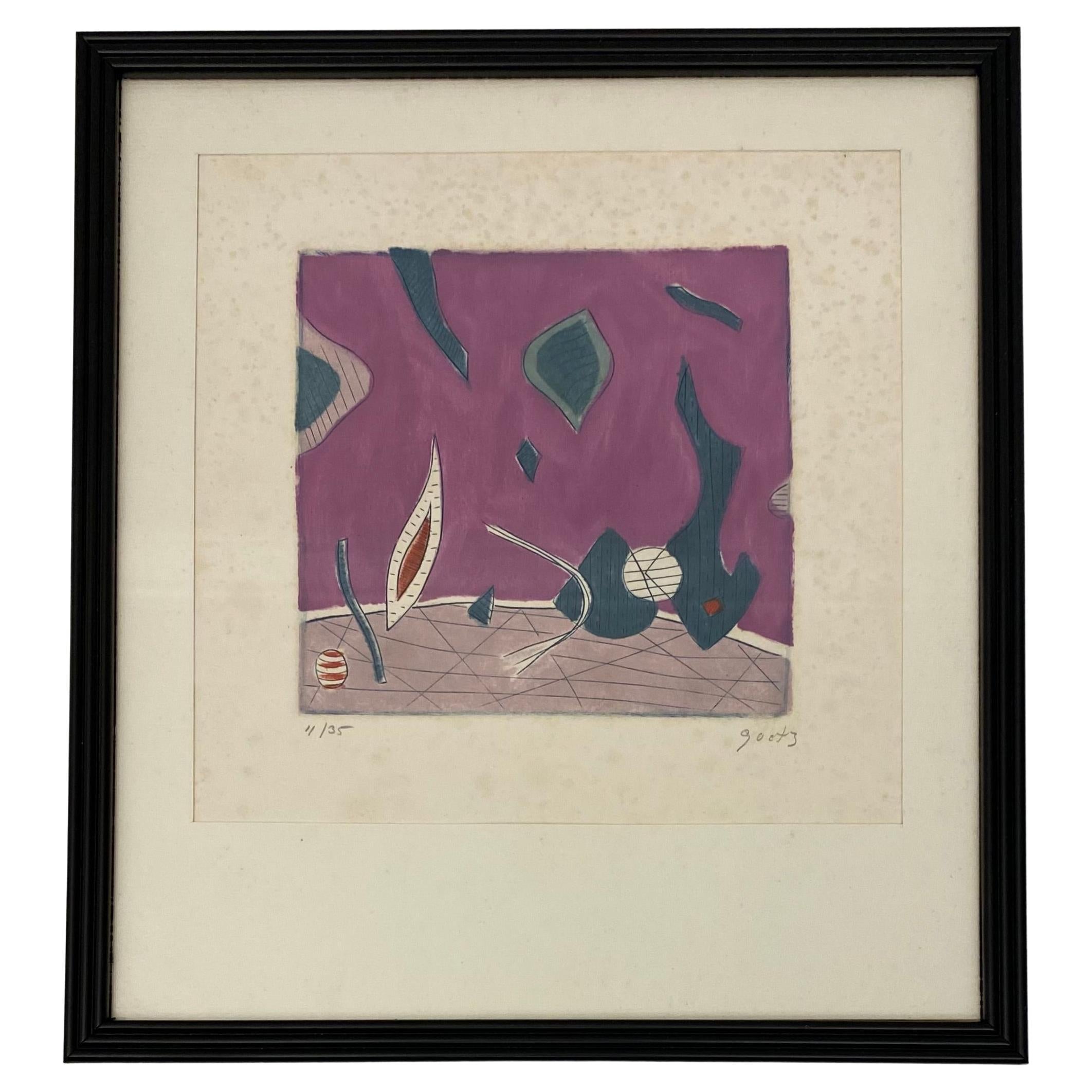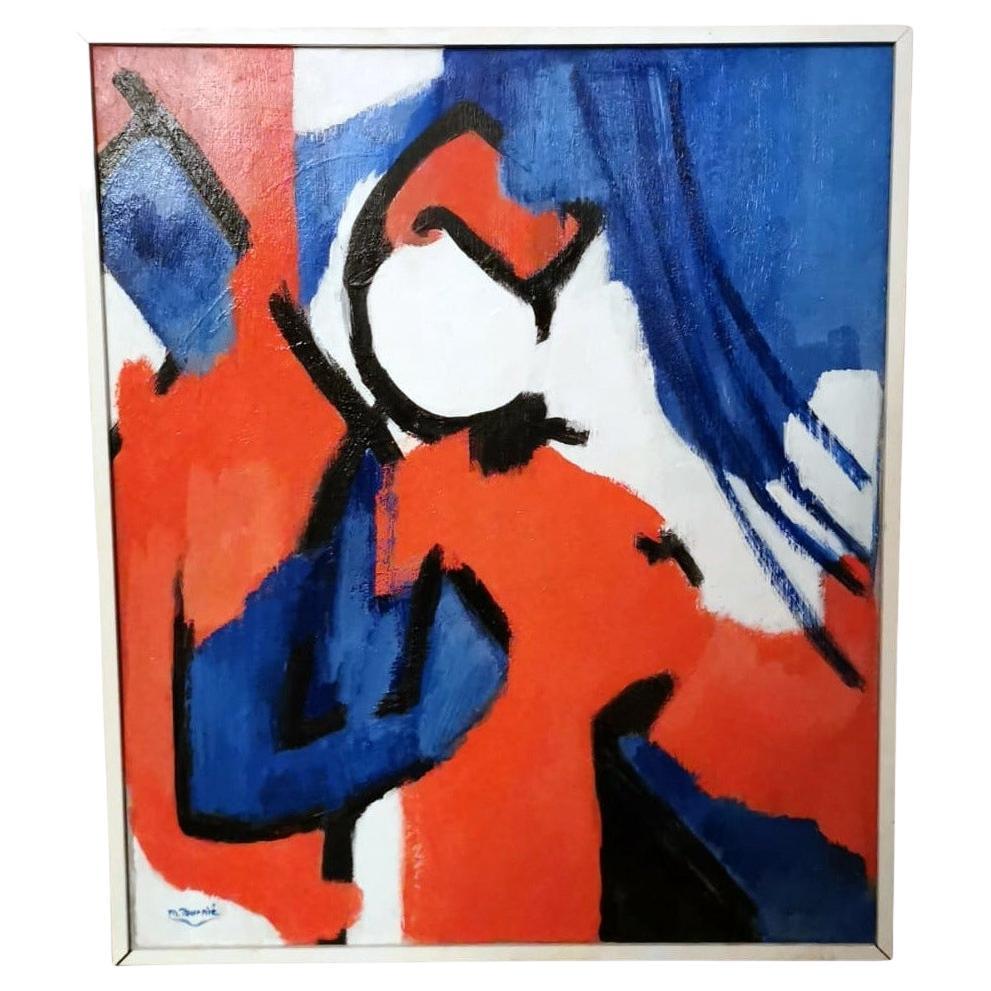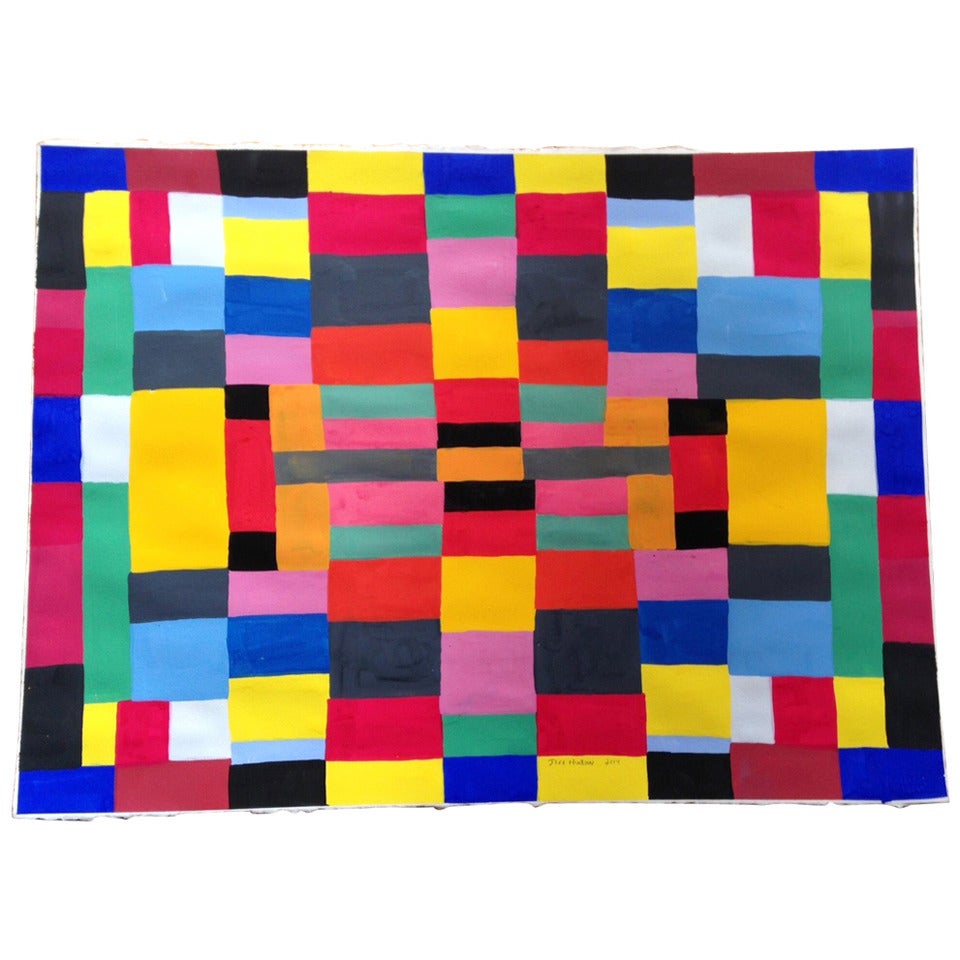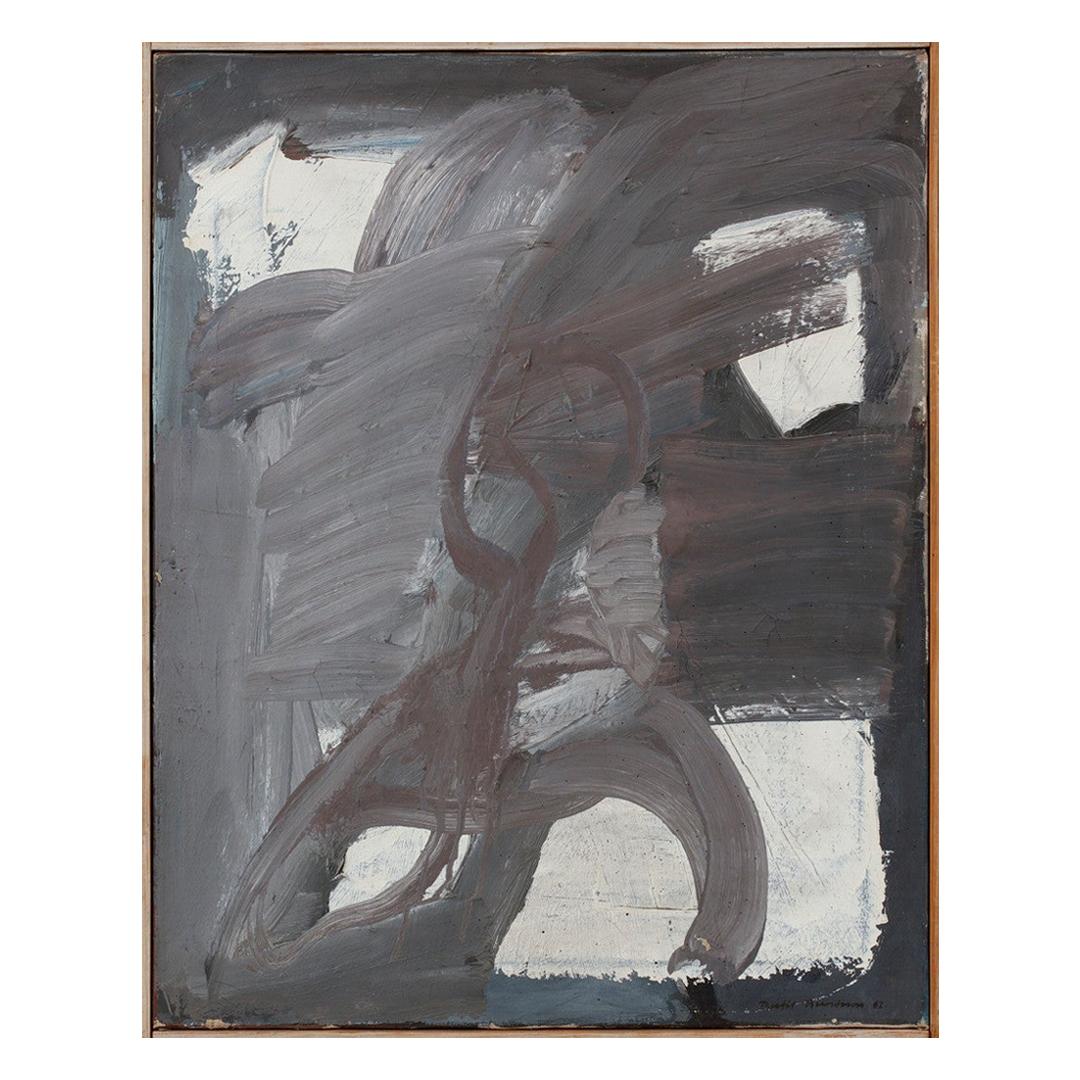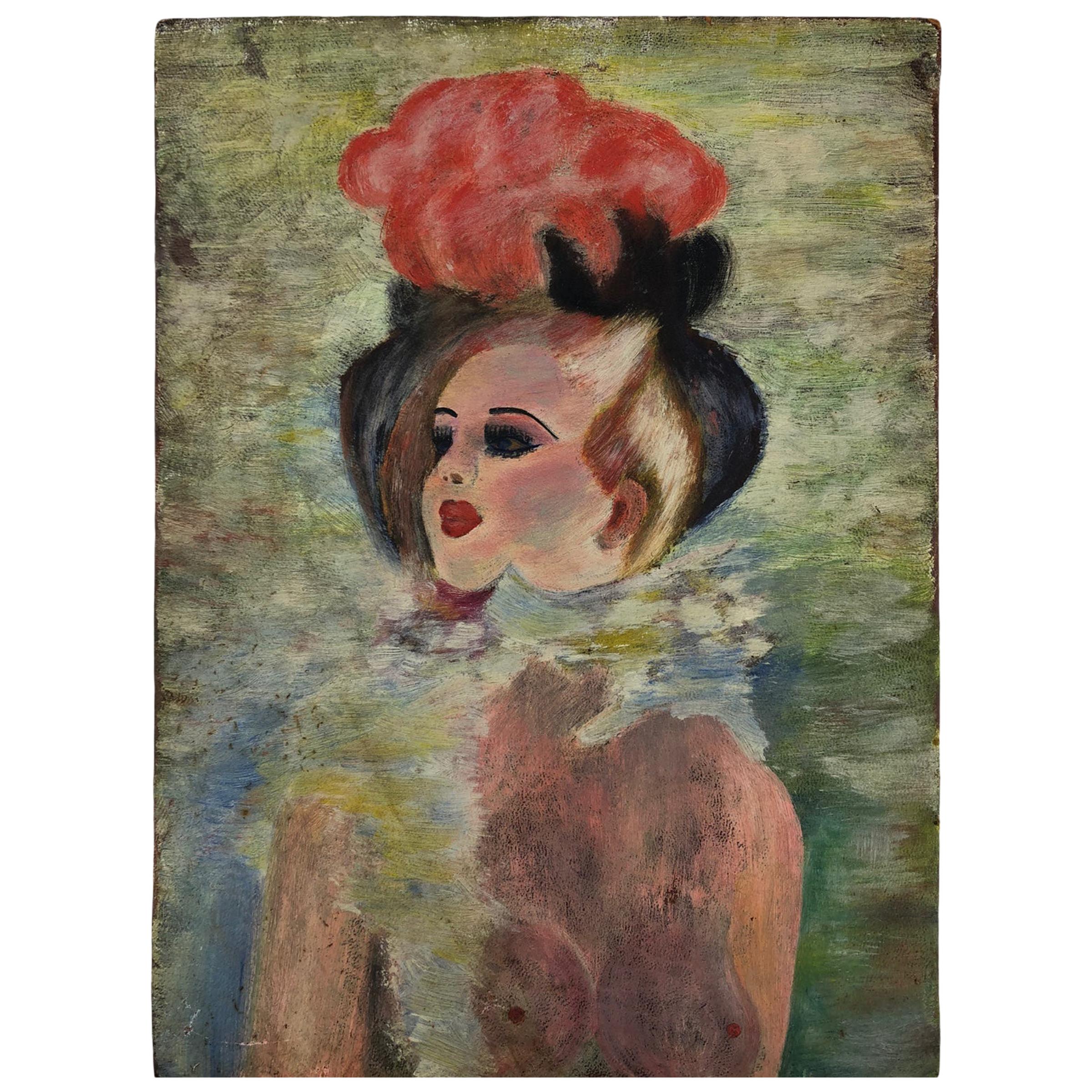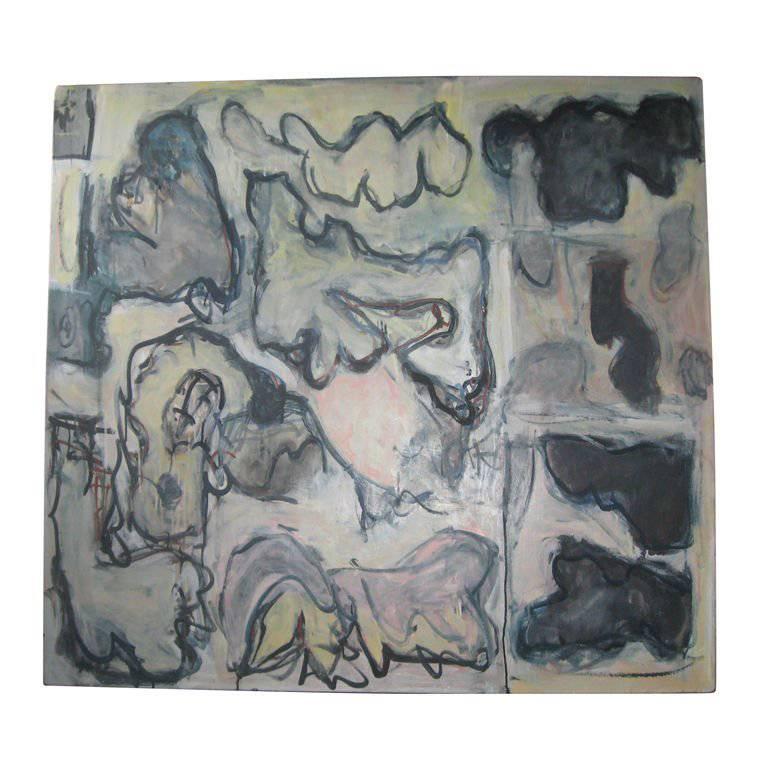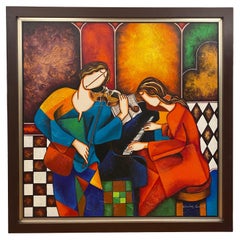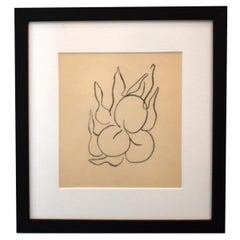
FRENCH 1960'S OIL PAINTING: 'TEA FOR TWO' By Henri Noyer
View Similar Items
1 of 4
FRENCH 1960'S OIL PAINTING: 'TEA FOR TWO' By Henri Noyer
About the Item
You May Also Like
- Large Charles Lee Oil on Canvas Painting "Music for Two", CertifiedBy Charles LeeLocated in Miami, FLLarge contemporary oil on canvas painting by Charles Lee titled "Music for Two". This beautiful piece of art will enhance any modern or contemporary setting, anywhere vibrant colore...Category
20th Century American Post-Modern Paintings
MaterialsPaint, Wood
$2,600 Sale Price55% Off - Henri Matisse "Fruits" Black & White Lithograph by Henri MatisseBy Henri MatisseLocated in Cathedral City, CAHenri Matisse "Fruits," original black & white lithograph by Henri Matisse Henri Matisse - Fruits - Original Lithograph 1965 Edition of 200 (one of the 200 on Vélin de Rives) M...Category
Vintage 1960s French Mid-Century Modern Contemporary Art
MaterialsWood, Paper
- Abstract Oil on Canvas Painting by Bertil Berntsson, Sweden, 1960sBy Bertil BerntssonLocated in Stockholm, SERare abstract oil on canvas painting by the Swedish artist Bertil Berntsson made in 1964. In good vintage condition with small signs of use. Framed in a pine frame. 129 x 120 x 2 cm.Category
Vintage 1960s Swedish Scandinavian Modern Contemporary Art
MaterialsCanvas, Pine
- Henri Goetz Abstract Composition Signed Lithograph circa 1960sBy Henri GoetzLocated in Miami, FLOriginal limited edition lithograph by Henri Bernard Goetz, number 11/35. Henri Bernard Goetz (September 29, 1909-August 12, 1989) was a French American Surrealist painter and engr...Category
20th Century French Mid-Century Modern Paintings
MaterialsPaper
$1,660 Sale Price20% Off - French Symbolic Expressionism Oil Painting Depicting French RevolutionLocated in Prato, TuscanyWe kindly suggest that you read the entire description, as with it we try to give you detailed technical and historical information to ensure the authenticity of our objects. Painting oil painting on canvas is made with mixed technique brush and spatula; the author used traditional brushes for a first draft giving shape to the whole drawing with an expert, loose wrist play and with sure and decisive brushstrokes; the representation, in this case, is not a pure exercise of virtuosity, in fact, the author communicates us his intimate essence manifesting it through the language of colors, shapes, and composition. The artist finished his work with the technique of spatula painting, named after the protagonist's instrument, redistributing the colors densely and consistently, making the painting take on a special body and depth. The painting is signed but we are unable to give definite information about the author, however, we confirm its extraordinary aesthetic and engaging vividness; the painting was made in 1989 in the author's studio in Paris whose intentions were to celebrate the 200th anniversary of the French Revolution (1789). The painter was inspired by both French Expressionism and Symbolism; Expressionism exalts the emotional value of art; it is the artist's desire to communicate inner feelings, while with Symbolism, painters tend to go beyond the objective representation of reality to focus instead on the subjective vision, in which inner feelings, emotions, and experiences are evoked above all. Our painting is overflowing with the symbolism of the French Revolution; it is practically an evocative essence of it. This important and overwhelming historical event is powerfully present in the soul of the artist who wanted to overbearingly communicate to us his deepest emotions by transposing them entirely in the painting with strong and vivid colors, he did not want to simply allude or hint but to express, indeed "shout" his own deep interiority. In his intentions, the painting schematically and symbolically represents a standard-bearer of the French Revolution wearing the classic "Phrygian" hat. The author used only the three colors white, red, and blue that characterized the flags of the French Revolution; they were the new banners, which opposed the traditional emblem of the monarchy, the lilies on a white field. Three were the colors because three were the goals of the Revolution: liberty, equality, and fraternity, and they represented the three classes into which French society of the time was divided: the clergy (blue), the nobility (white), and the third state (red). The "Phrygian" cap (Latin for pileus) painted in red in the painting also has a high symbolic value, In Roman times it was worn by the " freedmen" to show that they were now freed slaves but in the French Revolution it became the very symbol of Liberty; a similar cap was worn by the freed Marseilles convicts in 1792, and was the symbol of the Jacobins during the French Revolution. Due to this fact, in addition to its historical meaning of freedom, it was later adopted as a symbol of the revolution itself, a symbol immortalized on the "Marianne," the very emblem of France, in Eugène Delacroix's famous painting "Liberty Leading the People...Category
Late 20th Century French Modern Paintings
MaterialsCanvas, Wood
- Oil Painting by Sabatino AbateBy Sabatino AbateLocated in Essex, MAMaster work of Sabatino Abate (1946-2011). Nude self portrait by Abate Whose Life Transformed Many. Studied at the Boston Museum of fine Arts, Museum Sc...Category
Late 20th Century American Contemporary Art
MaterialsCanvas
